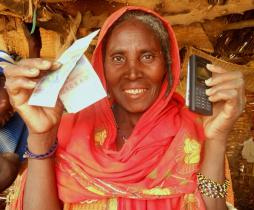cash aid
Posted by KatrinVerclas on Jun 09, 2010
This guest post was submitted by Amanda McClelland, Emergency Nutrition and Food Security Manager, Concern Worldwide, Niger.
I arrived in Niger three months ago to help the Concern Worldwide country team scale up and roll out an emergency program to respond to the emerging food crisis. It’s hard to say when exactly this shifted from an “impending crisis” to a real humanitarian emergency, but we are there now. And we are putting every bit of the planning this team has done since December to the test. The official Food Security survey of April 2010 states that there are 7.1 million people facing hunger: 3.3 million of those are considered to be facing extremely food shortages and unable to feed their families’ without help. Concern’s program is in Tahoua, the second worst affected part of the country.
Every day, we are working at maximum capacity on initiatives to prevent rates of malnutrition from reaching emergency thresholds. We are distributing seed packs and fertilizer to help families plant crops in time for the next harvest; providing nutrition support to children under five, pregnant women and mothers; and are launching an innovative use of mobile phone technology (and manual transfers) to distribute emergency cash to the most vulnerable women. We have high hopes for this program—and we are starting to see its great potential. (Note of the editor: Concern conducted a similar mobile cash program in Kenya in 2008 that we wrote up on MobileActive.org here. Concern also published an extensive evaluation of the Kenya programme (PDF)
What we are doing sounds easy when I write it, but delivering aid in Niger is anything but easy.
| The Secret Weapons in Niger’s Fight Against Hunger: Photo IDs & Mobile Phones. A Guest Post from Concern Worldwide data sheet 5207 Views |
| Countries: |
Niger
|
Posted by KatrinVerclas on Mar 30, 2009
In early 2008 violence errupted in Kenya after the most recent elections there the previous December. Post-election tribal warfare resulted in the death of 1,200 people, internally displaced 400,000 to 600,000 people, and destroyed more than 41,000 properties. The economic cost of the crisis has been estimated at more than KSh 100 billion (approx US $ 1.5 billion), with more than half a milion jobs lost. The World Bank noted that over 2 million Kenyans may have been driven into poverty as a result of the violence. Food security also declined with farmers unable to cultivate and harvest their farms in early 2008.

